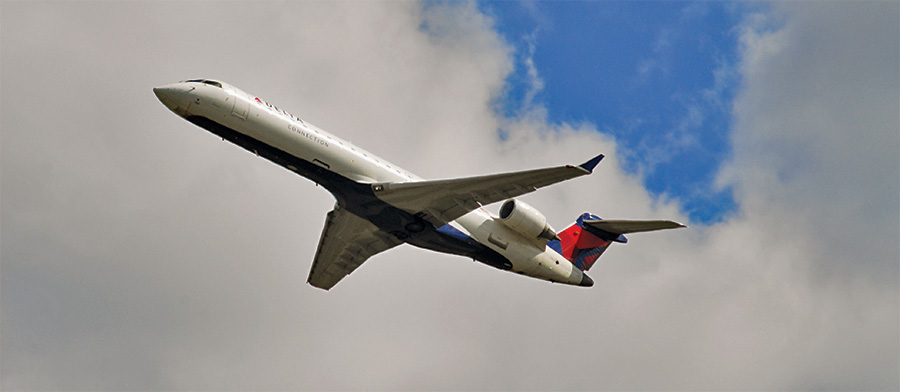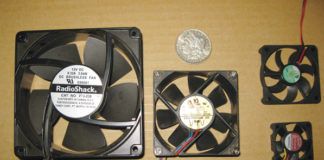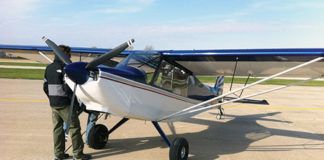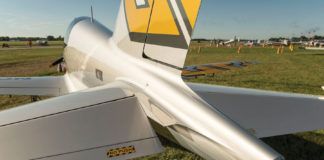So far over the course of my flying career, I’ve been managing to fill the experience bucket faster than the luck bucket is emptying. And I believe most pilots are able to do that, especially if we stay away from doing the stupid things like low-level show-off aerobatics, running out of fuel, or continued VFR into IMC. During our initial flight training we do practice for the obvious, such as engine failures, inoperative radios, and weather scenarios, and discuss others, such as inoperative or stuck trim. In some cases we learned to react by rote learning. Many other failures are few and far between and can be somewhat insidious and slow to present themselves, even with the simpler, mostly mechanical airplanes of yesterday. With today’s completely glass cockpits, I am a strong proponent of really understanding the systems and how they all work together. I want to share a couple of examples I’ve experienced, from the simple to the complex.

This Bombardier regional jet is similar to the ones flown by Vic when he worked as a first officer for Atlantic Southeast Airlines. Photo: Lord of the Wings [CC BY-SA 2.0], via Wikimedia Commons
Small Problem, Easy Solution
On one of those trips to Cleveland, Ohio, it rained for three days while our Bonanza was parked outside. The temps then proceeded to drop below freezing on the day of our departure. I thoroughly preflighted the aircraft, preheated the engine, and drained the fuel sumps multiple times, even though I never found any signs of water. Startup, taxi, and runup were normal. I know what you’re already thinking: frozen fuel lines. Nope. I was departing IMC into an 800-foot overcast that was clear above 3000. Takeoff roll was normal, and once airborne and pitched to the correct angle, I immediately transitioned to instruments to prepare for the immersion in the overcast. A quick scan revealed all was normal with the engine, but as I came back to the flight instruments I noticed the VSI and altimeter were showing a descent and the airspeed was decreasing. The attitude indicator looked normal, and a quick glance outside showed I still had the right pitch angle. I had enough experience in the Bonanza to know that at these temps and with two adults and two small kids in the back, climb should not be a problem. The outside visual picture matched the normal climb I was used to seeing. I believe in the old adage of not reacting quickly and looking at your watch.
A normal reaction here would have been to push the nose over, as we were clearly approaching an impending stall if I were to believe the airspeed indicator. It happened a little faster than I can write it, but I quickly recognized it as a blocked static system. Upon activating the alternate static source, everything immediately came back to normal. We continued the flight back to Atlanta, and once on the ground and in warmer conditions, we managed to blow a lot of water out of the static system, disconnected of course.
With a modern glass panel and all of the bells and whistles, I am sure I would have heard something like “Speed! Speed! Push! Push!” Good input. Bad output. And I managed to see it actually happen while flying a regional jet.
WOW!
It was the start of a four-day trip, and I was flying the first two legs, one from Atlanta to Newark and then from Newark to Columbia, South Carolina. It was during cruise on the first leg that I noticed the first anomaly. We had a wind shear alert message flash across both PFDs for a split second. The captain didn’t notice it because he was busy playing his Game Boy. But upon discussion, we both agreed it should not happen at 35,000 feet. It happened again, and this time the captain saw it, too. The remainder of the leg was normal, but it happened again on the leg to Columbia. Our trip that day called for a leg to Atlanta after Columbia before we headed out again, and I mentioned that I thought we should have maintenance take a look at the airplane, as I thought something might be failing in the air data computer. We traded roles departing Columbia, and I was now the non-flying pilot. On the departure roll, and just as I called V1, we hit a bump in the runway. Subsequently, it seemed like every warning light and horn went off in the cockpit.
For those readers who aren’t multi-engine rated, V1 is the speed at which an abort on the remaining runway is not in the cards. We were committed. I silenced the horns and then tried to make sense out of the EICAS (Electronic Instruments and Crew Alerting System) readout. At the top of the list was WOW (Weight on Wheels) failure. I kind of chuckled as there was no way a WOW failure should present itself right now, as we certainly weren’t configured for landing and the spoilers weren’t armed. Remember my motto to understand the systems?
By the way, I was flying with a very young 2700-hour Embry-Riddle captain, and I was a little concerned about how he might react, which was justified as the flight continued. I told the captain we were OK, continue, and I will explain above 10,000 feet. Earlier he wasn’t so agreeable that we should have maintenance look at the airplane when we arrived in Atlanta. I now made it clear that we really needed to ground the airplane, and he agreed.
From Bad to Worse
The computer still had a few tricks in store for us. It was the middle of August, and that time of the year is prone to afternoon thunderstorms. Sure enough, as we approached Atlanta, we were put into a holding pattern due to a thunderstorm parked right over the airport. We didn’t exactly have enough fuel for a lot of holding, so the captain transferred the controls to me while he worked with dispatch to find an alternate. So there I was going around in circles at 225 KIAS and 7000 feet watching the thunderstorms build around me. It was a nice view, but things weren’t looking real friendly, so I keyed the mic and told Approach that we couldn’t hold here much longer. Approach acknowledged and gave me a heading that would be pretty much direct to the airport. Yes! I turned to the new heading just as the captain came back on and said we were going to our alternate. I briefed the controls change and just as the captain assumed the controls, we poked into a puffy cumulus cloud. Well at 225 KIAS it was a pretty good bump, and whatever was loose in the ADC (Air Data Computer) reared its ugly head. We immediately got a “Stall! Stall! Stall!” audio warning along with stick shaker activation and a whole bunch of warning lights. Now I knew we were not stalled. We were in fact almost 90 knots above the stalling speed at our current weight. However, before I could say anything, the captain reacted to his rote-learned behavior for a stall (most likely in a C-172). He immediately shoved the yoke and the throttles full forward. I yelled, “Captain we are not stalled—look at the EFIS airspeed and the standby airspeed,” and I proceeded to pull the yoke and throttles back, as well as declare an emergency. We were now at 335 KIAS and in a pretty good dive.
I’m sure I looked like a one-armed paper hanger! Just as we rounded out, we came out the bottom of the cloud into smooth air, and everything went quiet again. The captain was frozen on the standby instruments, and I was explaining to Approach that we had a computer and flight control problem and needed immediate vectors to the airport. Before I could finish we hit another bump and the scenario started all over again, not the least of which was the captain wanting to push the yoke forward as if we were in a stall. As respectful as I could be at the time, I explained we had nothing more than a computer problem, and we needed to turn the stall protection off. I was overruled by someone who didn’t understand how the stall protection worked. The scenario repeated itself about five more times on the way to the FAF (Final Approach Fix), and I politely told the captain that I was turning stall protection off at the outer marker. I was not going to participate in a landing with the stick shaker potentially going off. I knew that the stick shaker first activates and then at the 30-second mark will push the nose over if you don’t take corrective action. So far, our problems had lasted less than 30 seconds.
As luck would have it, it seems none of the passengers had noticed our earlier nosedive as we were in the clouds and were fairly level when we came out. I did my usual standing in the door and thanked them for flying with us!
The captain and I spent a good amount of time with maintenance, and we all agreed to ground the aircraft. I have ridden in that same aircraft as a passenger since then, and it always gives me the willies.
I’m out of space for this month, but in a future column, I will share one other lesson learned regarding systems knowledge and situational awareness. In the meantime, keep the fun factor alive, whether you are building or flying!

![]()
Vic Syracuse is a Commercial Pilot and CFII with ASMEL/ASES ratings, an A&P, DAR, and EAA Technical Advisor and Flight Counselor. Passionately involved in aviation for over 36 years, he has built nine award-winning aircraft and has logged over 7500 hours in 69 different kinds of aircraft. Vic had a career in technology as a senior-level executive and volunteers as a Young Eagle pilot and Angel Flight pilot. He also has his own sport aviation business called Base Leg Aviation.













